December 16, 2022, marks the 78th anniversary of the Battle of the Bulge.
The WWII German offensive that came to be known as the “Battle of the Bulge” was the largest and bloodiest single battle fought by the United States in World War II.
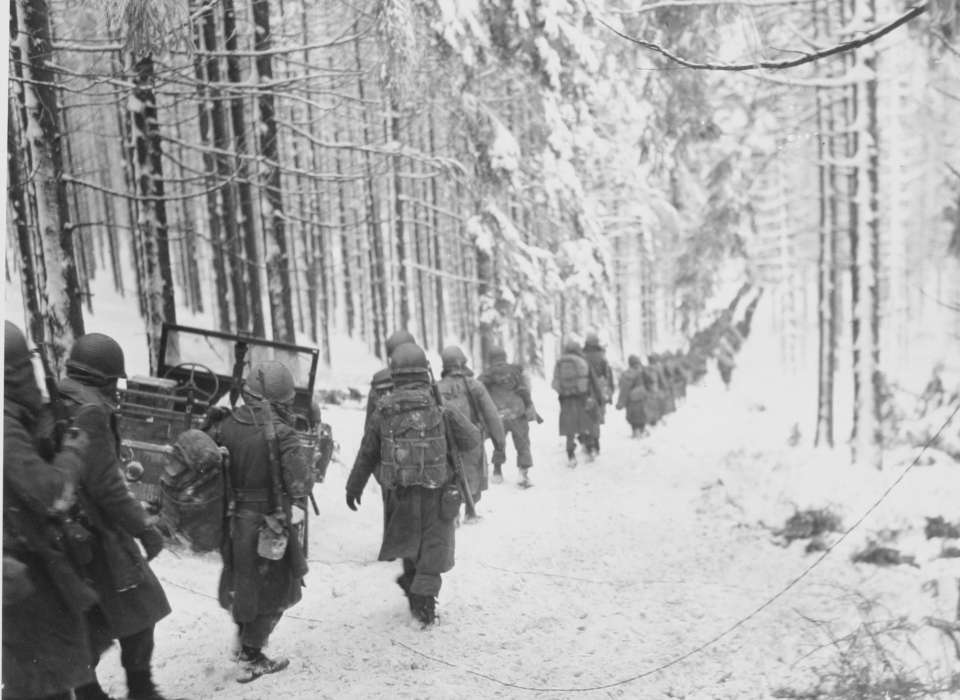
Involving more than 610,000 American troops and 450,000 German soldiers with 1,500 tanks and assault guns, it claimed 89,000 American casualties (which included 19,000 killed) and almost 70,000 German casualties.
So, in honor of this historic battle and its anniversary, we’re taking a look at the guns used in the fight.
Table of Contents
Loading…
Some Background
The war was not going well for the Germans. Even Hitler (who took over direct command of the German military in December 1941) could see the writing on the wall – especially if the Soviets attacked.
He devised a daredevil plan to divide the American/British/Canadian allies along a north-south line. Attacking in total secrecy, troops would drive to the port of Antwerp, thereby splitting the Allies.
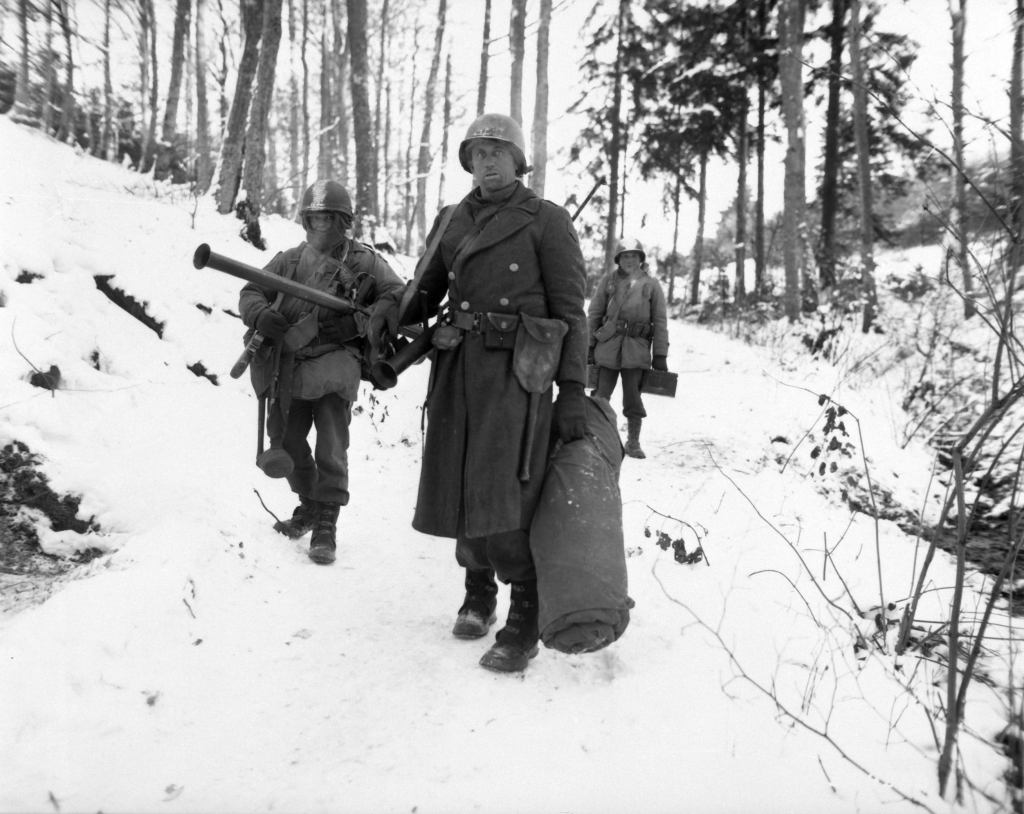
Without writing another Battle of the Bulge book, let’s just say it almost worked.
Hundreds of thousands of troops, tanks, guns, etc., gathered in the Ardennes Forest, unbeknownst to Allied intelligence. They moved quietly into position at night, observing radio silence. The weather was bad – Allied aircraft were grounded because of fog and clouds, so the build-up went unseen.
Early in the morning of the 16th, the Germans attacked along a thinly held line in the Ardennes in an area that was supposed to have been a rest area for the First Army. It was considered secure, so there weren’t many combat troops to stand up to the German onslaught.
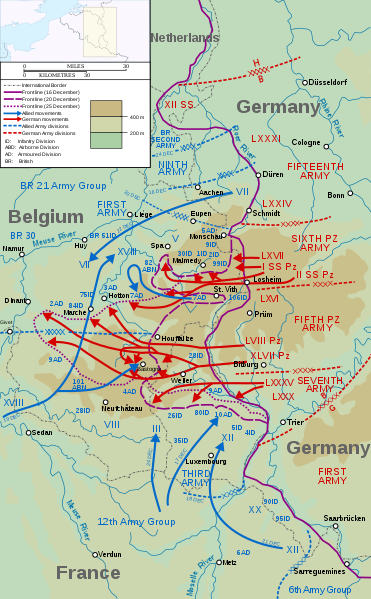
Rear-echelon troops quickly grabbed what weapons they could and helped delay the German advance. Confusion further slowed the Germans as they found columns of troops advancing on what was to be separate roads, both trying to go down the same road.
German soldiers had gotten hold of some American uniforms and placed special-unit soldiers in key positions in rear areas at crossroads. This was done to thwart the American response by sending them in the wrong direction.
Their main goal was to capture bridges over the river Meuse to speed German advance. This operation was known as Operation Grief and was led by Waffen-SS commando Otto Skorzeny. It did not achieve the intended results, but it delayed the American response.
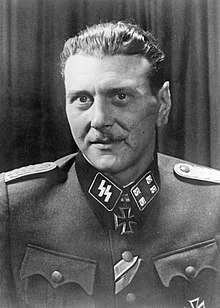
This last-ditch effort by Germany to split the Allies and drive to Antwerp started to unravel around December 24th when the weather cleared, and the Allies put fighter bombers in the air.
Patton’s Third Army wheeled 90 degrees, from east to north, to relieve the surrounded city of Bastogne the day after Christmas and the 101st Airborne trapped there.
The battle went on for another month or so, at which point the Americans regained the territory lost when the “bulge” in their lines was the greatest.
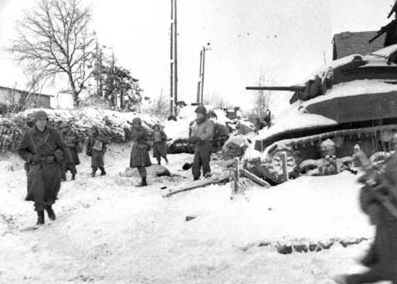
It remains to this day the third-largest confrontation our military has experienced in its history.
OK, history nerds… time to switch gears. Let’s look at some specific small arms carried by both sides in the battle. I won’t talk about armor or big gun; we’re sticking with small arms.
Battle of the Bulge: Rifles & Carbines
M1 Garand
The rifle category for the Americans consisted of the M1 Garand and the M1 Carbine. The Garand was the main battle weapon for front-line American forces at that time.
It’s the gun that George Patton called the “greatest battle implement ever designed.” He was definitely a fan.
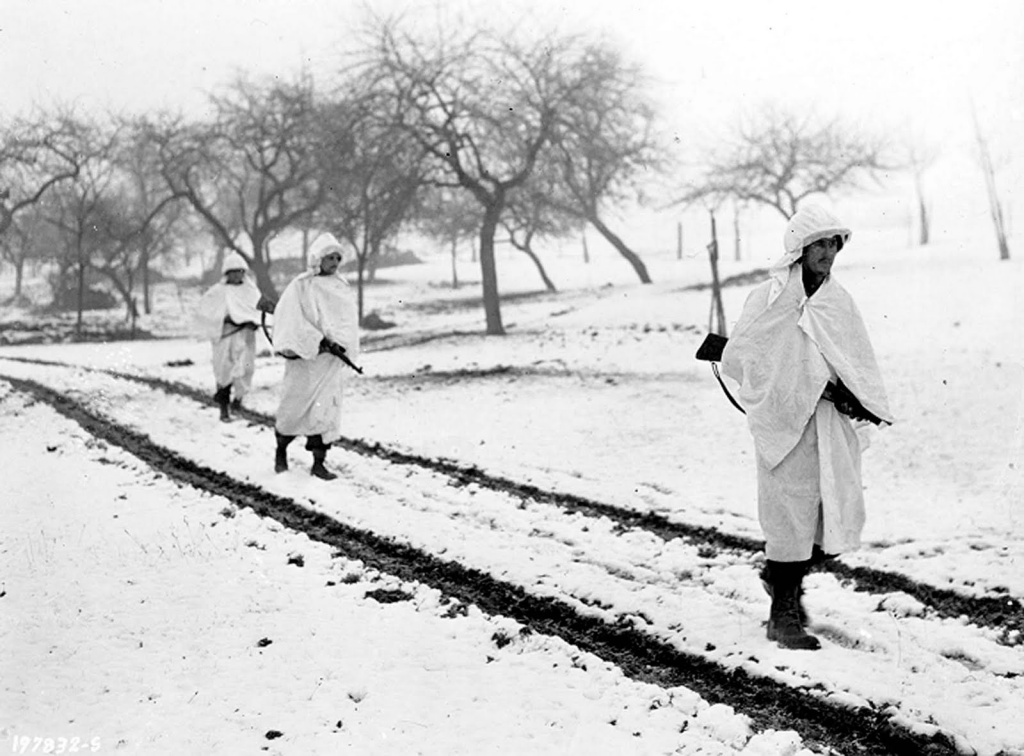
The Garand was the brainchild of John Garand.
Dating back to Army trials in 1924, the rifle that was to evolve into the .30-06 Garand was originally chambered in .276 Pederson. No less a person than MacArthur put the kibosh on that caliber, saying that we had plenty of the “30 M1 Ball” ammunition around and to not change it.
So, on August 3, 1933, the experimental T1E2 rifle became the “semi-automatic rifle, caliber .30, M1.” Thus, a legend was born.

The Garand is a large rifle weighing 9.5 pounds and stretching 43.5 inches. This undoubtedly helped to soak up the recoil of the not-insubstantial .30-06 round.
It was designed to be easy to operate and was so effective it lasted until 1958 when the M14 replaced it.
M1 Carbine
The other American rifle…well, carbine…used during the Battle was the M1 Carbine. Its official designation was the “United States Carbine, Caliber .30, M1.”
This little guy was really popular among soldiers who didn’t need the power and range of the M1 Garand.
Usually issued to rear-area personnel, tankers, truckers, and the like, the carbine was chambered in, suitably, .30 Carbine. One of the reasons it was so popular was its size – it was under a yard long and weighed only 5.2 pounds.
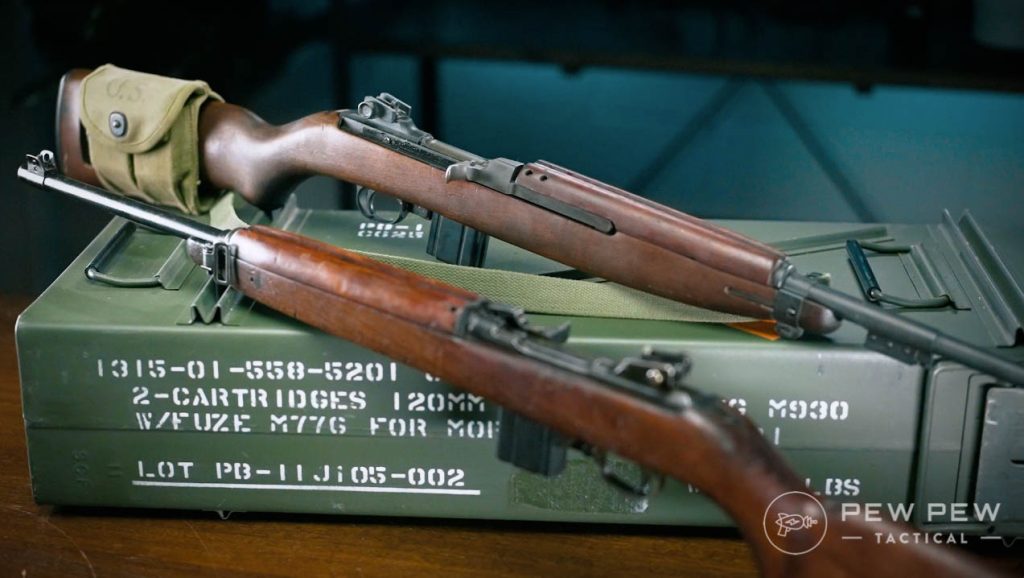
It was produced in a few different variations…
Folding wire stock for paratroopers
- M2 selective fire
- M3 selective-fire, infrared scope
As with the Garand, this carbine is still very popular today, despite its rather anemic cartridge. The .30 Carbine puts a 110-grain bullet out the muzzle at 1,990 fps, with an effective range of 300 yards.
The M1 carbine is probably the only military weapon that got its start in prison. It started in 1938 to address the long, heavy Garand that would often get caught on things when slung over a shoulder.
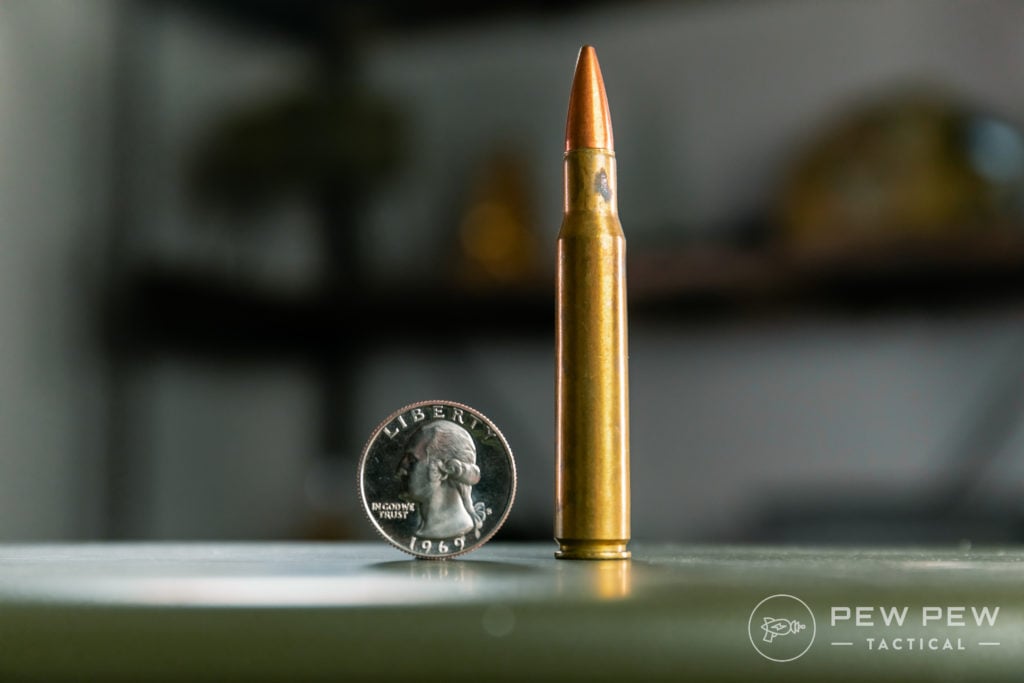
So, Winchester designed the .30 Carbine cartridge and then hired David “Carbine” Williams, who was serving a sentence at a minimum-security prison in North Carolina.
He’d been working on a short-stroke gas piston design while in the pokey. When he got out, Winchester hired him, and his gas piston design became the basis for the carbine that we all know and love into existence.
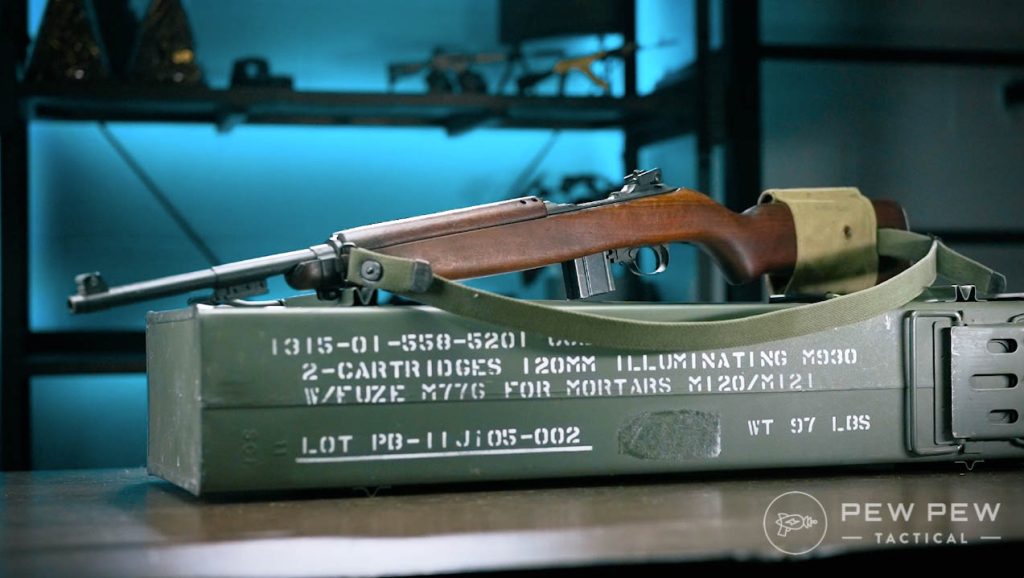
After a few false starts and other demands by the Army, the second prototype was deemed satisfactory. After Winchester refined it even more, it was formally adopted in October 1941.
We did a full review on the M1 Carbine, so read up on that here or watch the video below!
Kar98k – Karabiner 98 kurtz
Now onto Germany…the Kar98k is the short, carbine version of the full-sized K98 rifle.
Adopted by the German military in 1935, the Kar98k was chambered in 7.97×57, and its blind, stripper-clip-fed magazine held five rounds.
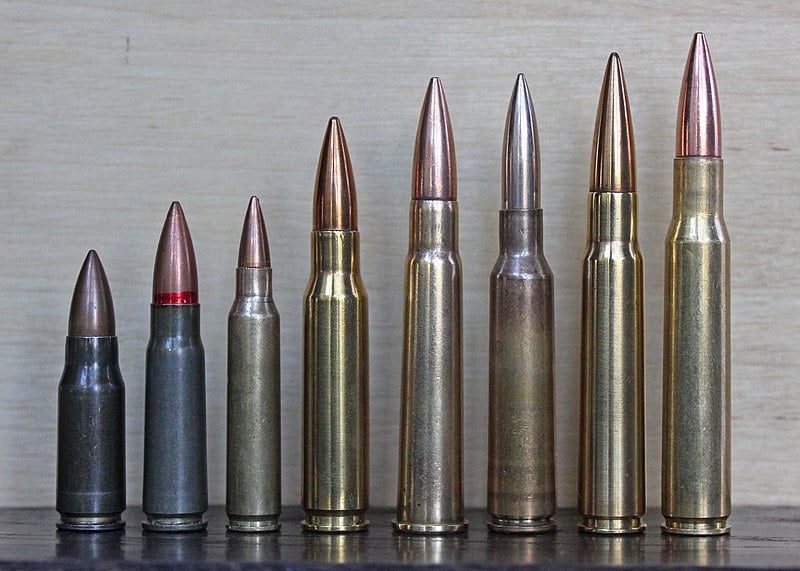
It was a controlled-feed bolt action, wherein the cartridge’s rim slipped under the extractor claw and was held in place as it entered the chamber. The bolt had two big locking lugs, and the rifle was accurate.
This long gun was the main battle rifle of the Wehrmacht, serving until the war’s end. The 98 was but one more in the long line of Mausers that Germany fielded over the years.
The main thing that set the 8mm Mauser K98k apart from the M1 Garand wasn’t the caliber. .32 vs. .30 at 2,900 fps is pretty close. It was the semi-auto vs. bolt-action factor.
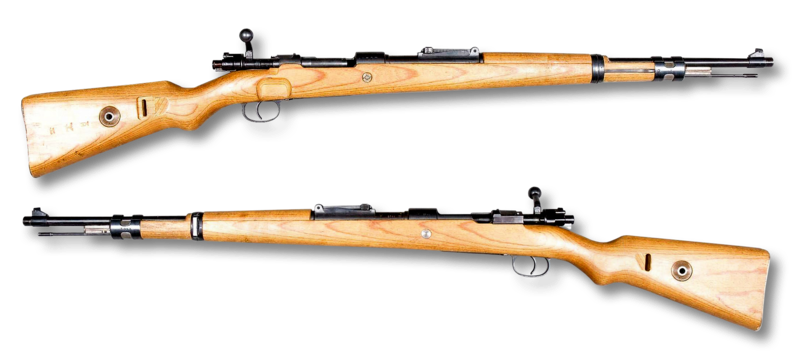
Those eight rounds of .30-06 could be cranked out faster than the typical German soldier could spit out five, working the bolt handle furiously.
In my humble opinion, this was the main difference between the two. The sights were different, too, with the Mauser using a rear blade while the M1 sports an aperture.
At any rate, the average German soldier was not under-gunned with the K98k.
Battle of the Bulge: Pistols
1911
Chambered in .45 ACP, this old warhorse fought from 1911 to 1985. It was the mainline issue pistol for American troops.
The 1911 has a storied history, and much has been written about it, so I will sum it up.
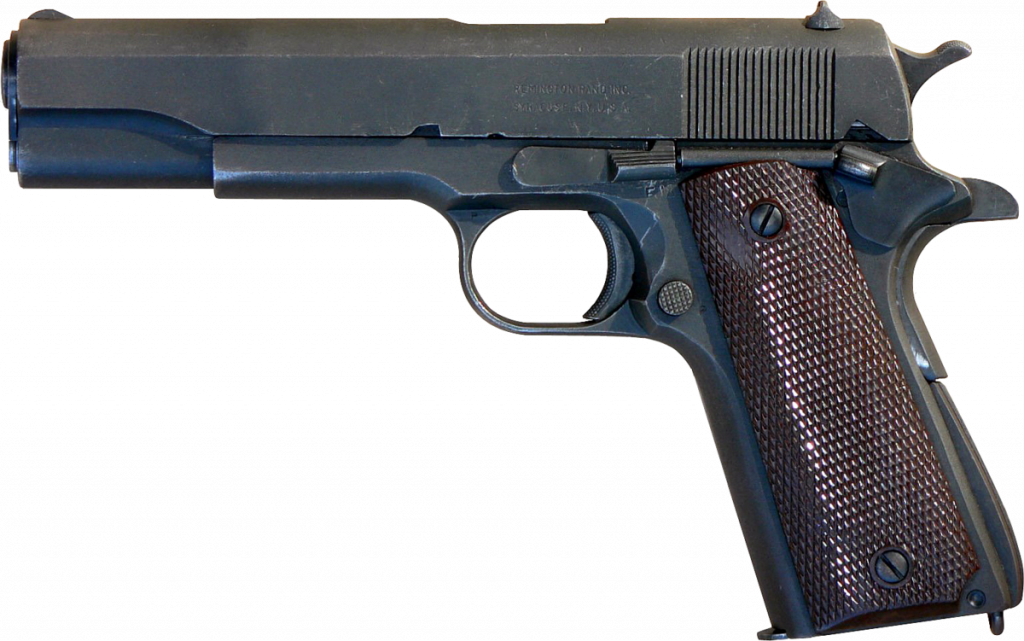
At the turn of the 20th century, the call went out for a semi-auto pistol to replace the ineffective .38 Colt revolver round. The Thompson-LeGarde tests of 1905 proved that the Army needed a bullet of “no less than .45 caliber” to be effective.
The 1911, with its 7- or 8-round magazine, was an efficient pistol. It fired a bigger bullet than any other issued sidearm during the war, except for maybe the British .455 Webley.
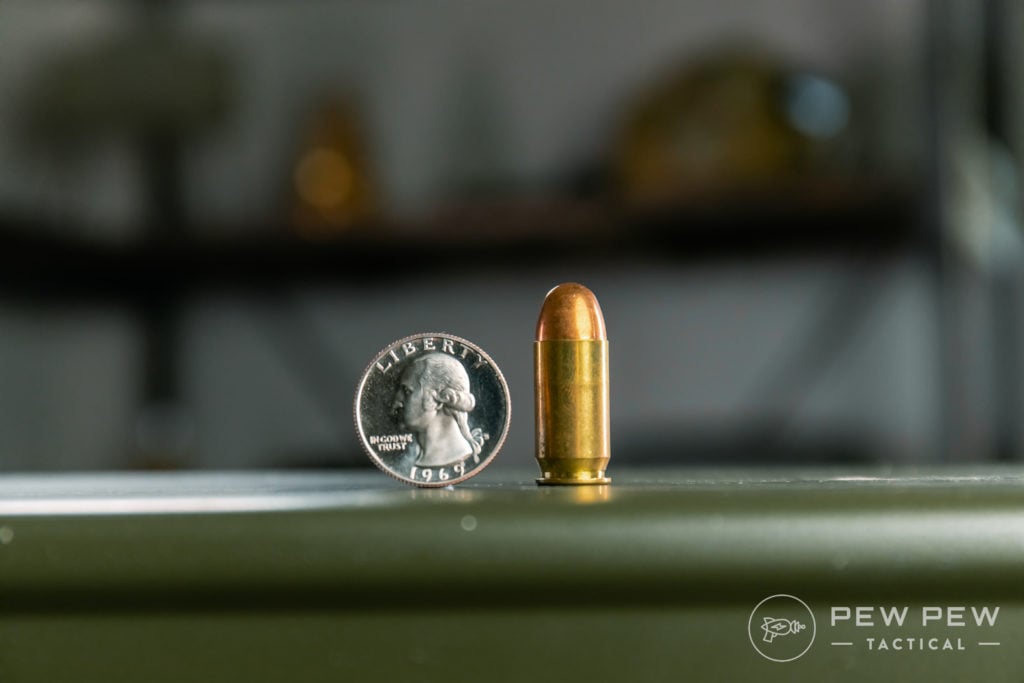
It was issued to officers and rear-area troops who really didn’t need a long gun. Tankers were also recipients, as a holstered pistol fits much better in a tank than a rifle.
It was not unusual, though, to see “ordinary grunts” with 1911s on their hips after they’d been in a battle or two…it was a popular commodity.
The pistol served until 1985 when it was replaced by the 9mm Beretta M9 to standardize on a NATO caliber.
All told, about 2.7 million 1911s were delivered to the various arms of our military from 1911 to 1985.
P08 Luger
The Luger, as it is commonly known, is one of the most iconic pistols of all time and was one of two pistols you’d find in the hands of German soldiers.
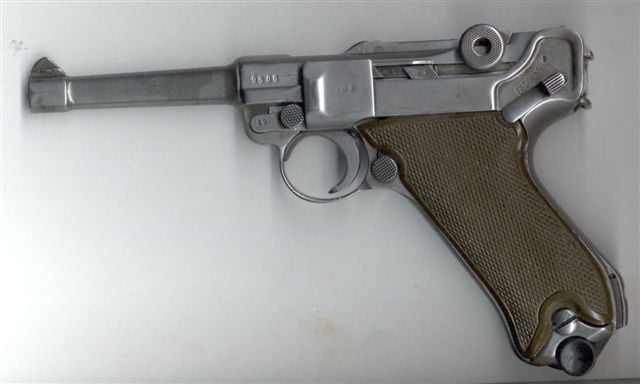
Designed by Georg Luger, who also designed its cartridge, the 9mm Parabellum, the Luger we all know was adopted by the Swiss in 1900. The German Navy and Army followed suit in 1906 and 1908.
It saw service from those years onward, well past WWII. The Luger’s intricate design didn’t tolerate dirt and mud easily, but it was rugged enough to be adopted.
We reviewed a Swiss Luger. If you’re interested in learning more, catch the review or watch the video below!
Walther P38
The Walther P38 was designed and produced by the Carl Walther company as a replacement for the Luger, which was slated to be discontinued in 1942.
German soldiers needed something less complex than the Luger and a design that would be easier to build.
The P38 was the first locked-breech pistol to use a DA/SA trigger. Shooters could use the safety/decocker lever to safely lower the hammer on a live round and either leave it in the “safe” position or back to “fire,” which allows the gun to be fired by just pulling the trigger.
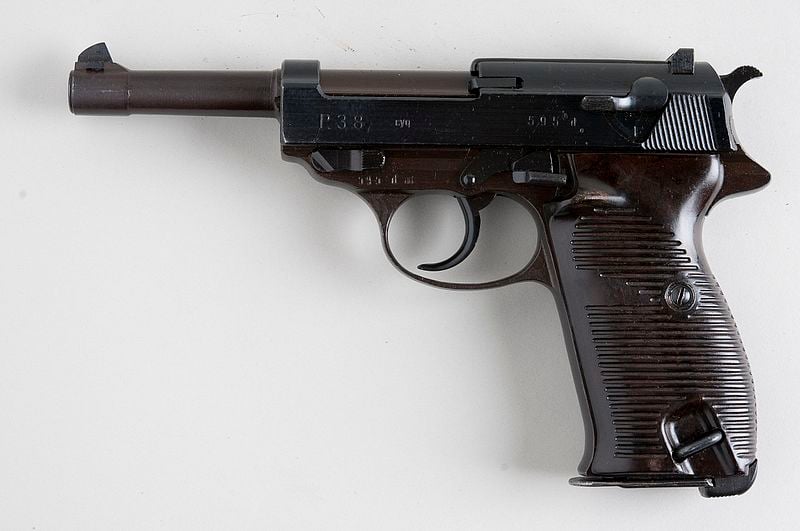
Throughout the war, Walther made 1.2 million P38s. It then ceased production until the West German Bundeswehr requested pistols.
So, in June 1957, the P38 was again produced for German forces. Walther had made a number of them for the French before that.
Collectors prize the P38 today – it’s a great-shooting pistol and exhibits some nice design lines.
Battle of the Bulge: Submachine Guns
M1928A1 Thompson
The M1928A1 Thompson submachine gun was widely distributed among American soldiers at the time of the Bulge.
It was, in fact, the only submachine in production when the war started but was joined later by the M3 “Grease Gun.”
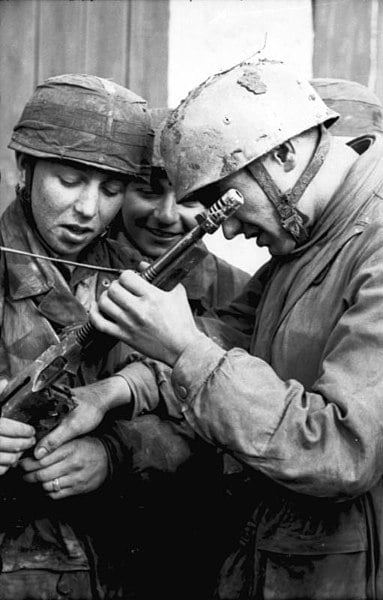
The original Thompson was expensive to manufacture and had features that a “trench-sweeper” didn’t really need. The Cutts Compensator helped hold the muzzle down during firing, and the complicated action locking system was simplified to a simple blowback one.
Both those features were removed.
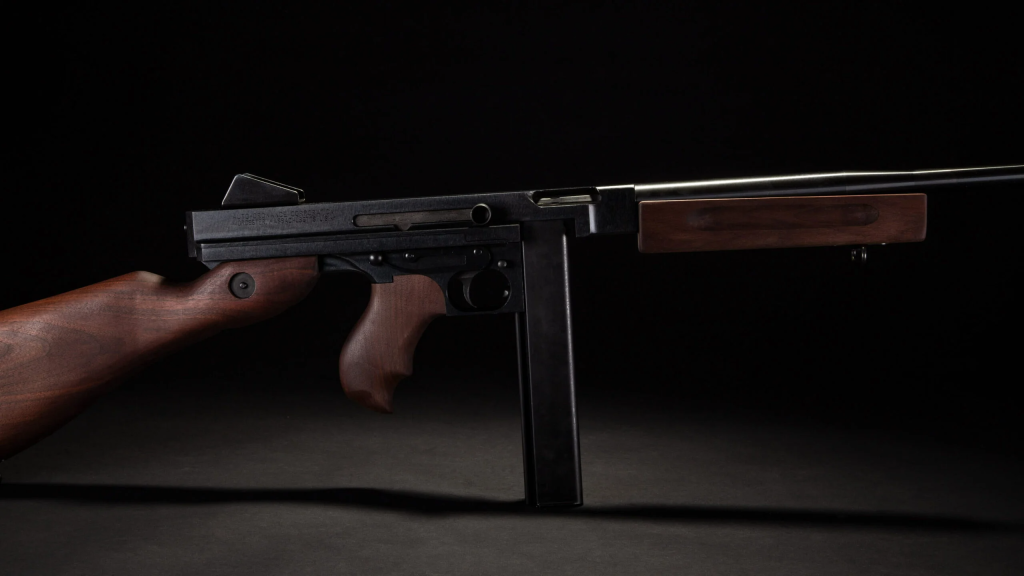
The cocking handle was moved from the top of the receiver to the side, and the drum magazine was replaced by a 20- or 30-round “stick” mag. Its bolt was simplified, replacing the hammer with a fixed firing pin on the bolt.
This weapon weighed 11 pounds when it was put into production as the M1A1 Thompson, and both Auto Ordnance and Savage produced the submachine gun.
M3/M3A1
The other popular submachine gun we fielded was the M3/M3A1.
This gun resulted from efforts to build a submachine gun more cheaply than the Thompson.
It used stamped metal parts, required little machining, and was loosely modeled after the British Sten gun.
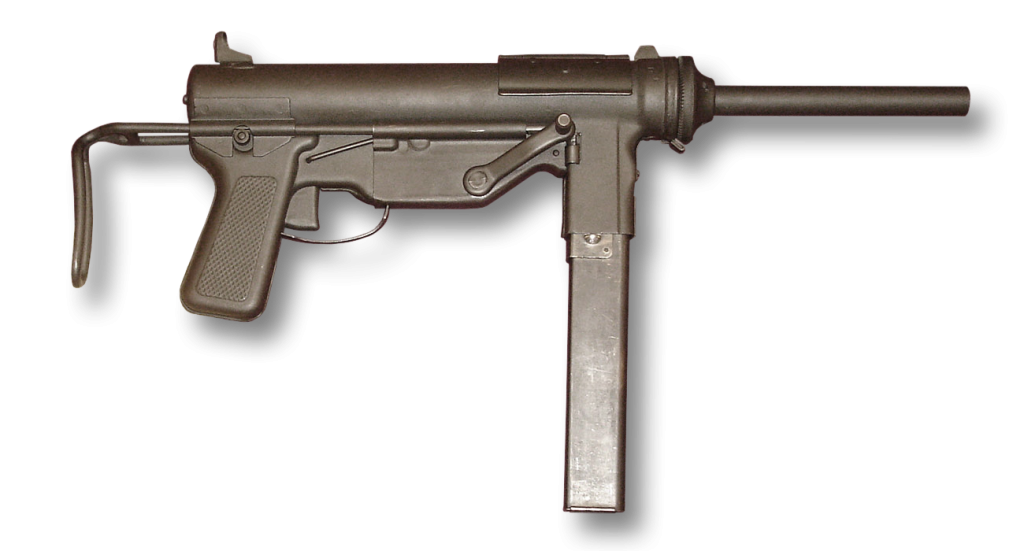
There was no fancy walnut stock or shiny metal here.
It was utilitarian, built for a purpose, and cheaply, at that. It was made by the Guide Lamp division of General Motors. That division had experience with stamped metal, so all it took was a little side-step, and they were producing submachine guns for under $20 each. ($338.65 in today’s money.)
This gun weighed 8 pounds and fired from a 30-round magazine, .45 ACP at 400 rpm. That’s a slow rate of fire but allows the shooter more control over the recoil.
The A1 did away with the cocking handle — you stuck your finger in a recess in the bolt and retracted it.
By the time of the Bulge, both guns were used as the M3 was in the process of replacing the Thompson.
BAR
The Browning Automatic Rifle (M1918/M1918A2) was the squad automatic weapon of its day. It was manufactured by two companies, the New England Small Arms Company and I.B.M.
The M1918 was select-fire, while the A2 added a bipod and reduced the firing rate to auto only. This gun was adopted during the final year of WWI but was popular for decades afterward.
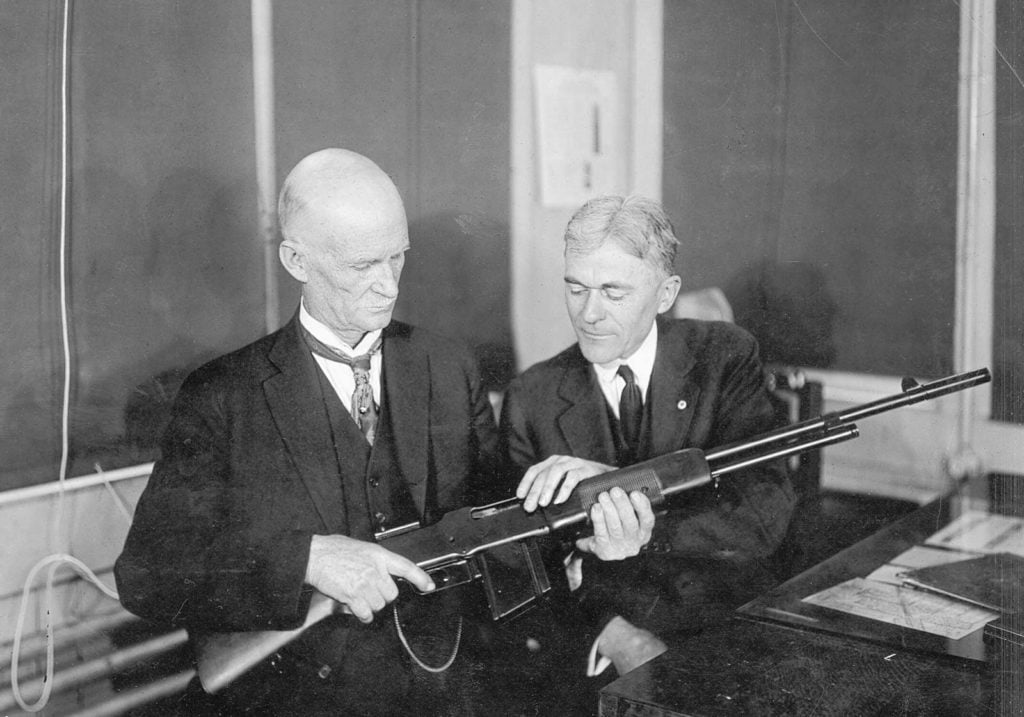
It weighed 20 pounds and fired from a 20-round box magazine at two rates…slow (300 – 450 rpm) and fast (500 – 650 rpm)
Even though it had its drawbacks – 20-pound weight with only 20-round mags, expensive receiver machining, no quick-change barrel – it was popular and bridged the gap between rifles and crew-served machine guns.
M1919 Browning Machine Gun
The M1919 Browning machine gun was the predominant .30 caliber crew-served weapon at the time of the Bulge. Though the 1917 water-cooled gun was also in use, the 1919 was seen more often, mostly due to its air-cooled nature.
Used by more than 20 countries, it came chambered in one of 10 calibers. It was more portable, weighing in at 37 pounds.
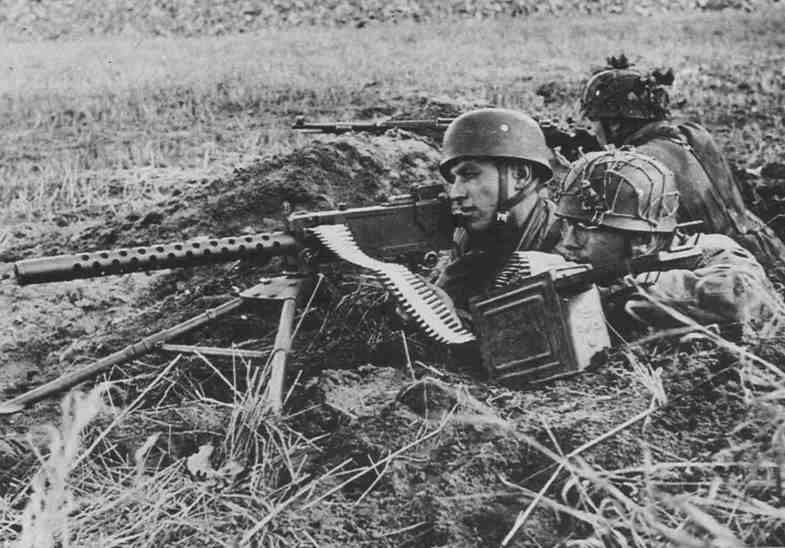
Dating back to 1927, when tactical thinking was starting to change due to the proliferation of armor, jeeps, and other mobile mounts, long barrages of fire were no longer necessary. A few “squirts” would keep the enemy’s heads down so the home team could maneuver.
This is one instance of a gun design that was based on updated thinking for its time and was used through the Vietnam war.
Originally a gun to be mounted in tanks, it was seen virtually everywhere, mounted on trucks, jeeps, aircraft, and tripods. Its adaptability was great.
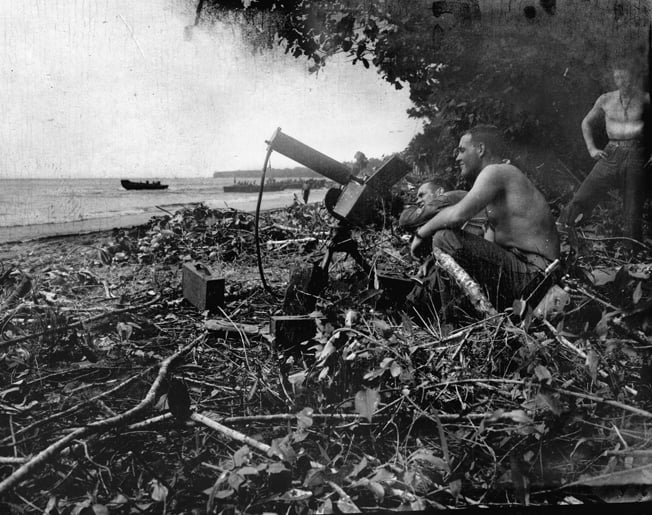
In continual development from 1927 through 1943 and beyond, it was seen with a bipod, lighter barrel, and buttstock to be carried and used by one person.
This led to the adoption, in 1957, of the M60 machine gun. That’s some track record!
MP40 Submachine Gun
Sometimes erringly referred to as a Schmeisser, after Hugo Schmeisser, who designed an earlier submachine gun, the MP40 was an inexpensively-produced 9mm full-auto gun with a folding stock.
It was designed in 1938 by Heinrich Vollmer, with its predecessor, the MP38, as inspiration. Erma Werke produced an estimated 1.1 million of these between 1940 and 1945.
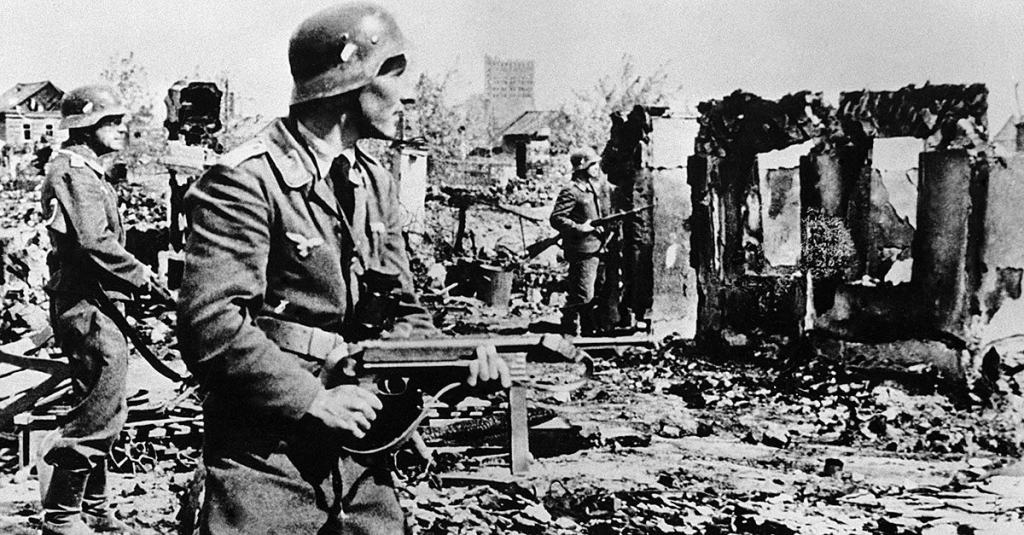
This gun fires from an open-bolt, blowback operation and weighs 8.75 pounds.
It’s one of few 9mm weapons to be blowback-operated, a rarity. The gun fires at a relatively slow rate of fire of 500 – 550 rpm, which allows those who have practiced with it to get off single shots.
Like the M3 “Grease Gun” above, it extensively uses stamped metal parts to cut production costs.
The gun’s main imperfection was its 32-round, double-column, single-feed magazine, which was unreliable. But even with a flaw or two, the MP40 was a popular weapon to “capture” and use, particularly by the Russian army.
MG42
The machine gun was king of the battlefield, or so some said, and German machine guns turned that up a notch or two.
An improvement on the MG34, the MG42 struck terror in soldiers’ hearts when they heard it cut loose. According to its sound, it’s like it was firing millions of rounds a minute.
In 1937, three companies were asked to submit samples for a potential replacement to the MG34. Metall und Lackierwarenfabrik Johannes Großfuß AG of Döbeln, Rheinmetall-Borsig AG of Sömmerda, and Stübgen AG of Erfurt all submitted designs, but ultimately, Warner Gruner of Großfuß was tasked with designing the gun.
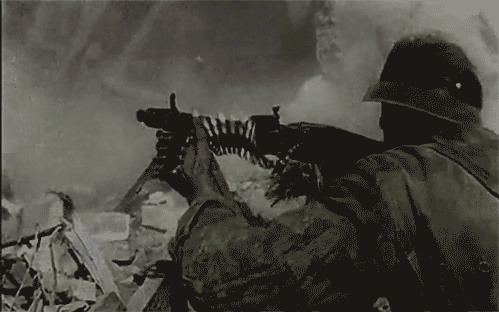
Gruner knew nothing about machine guns but wanted to learn, so he talked to soldiers and even went through a machine gunner’s course to familiarize himself with the needs of German soldiers.
Reusing an older Mauser action, Gruner changed things around and made the gun cheap to produce. In 1938, he presented the gun to those in charge.
After a limited run of 1,500 guns and more extensive testing, the gun was officially adopted in early 1942 and delivered to different branches of the German military.
Nicknamed “Hitler’s Buzzsaw” by Americans and the “Linoleum Ripper” by the Soviets, the MG42 inspired fear and respect in its enemies.
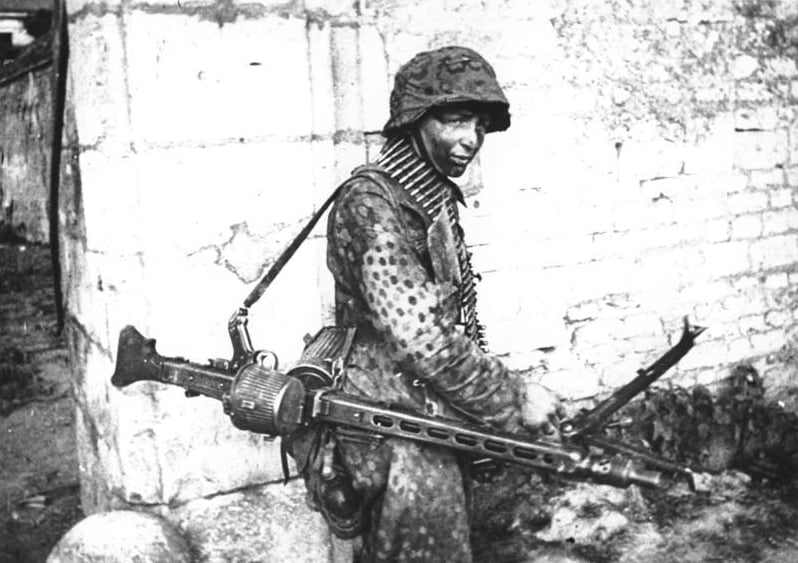
Its rate of fire was about double that of some of the other automatic weapons we’ve looked at here — 1,200 rounds per minute.
It was easy to use and equipped with some pretty unique features. Its barrel could be easily replaced when the old one was shot out. You could also feed this beast either by belt or magazine.
It was designed to be adaptable…a “do-it-all” machine gun depending on the need at the time.
German tactics promoted the machine gun to a prominent position. Squad tactics basically relegated the non-machine-gunners to carrying ammo for the MG.
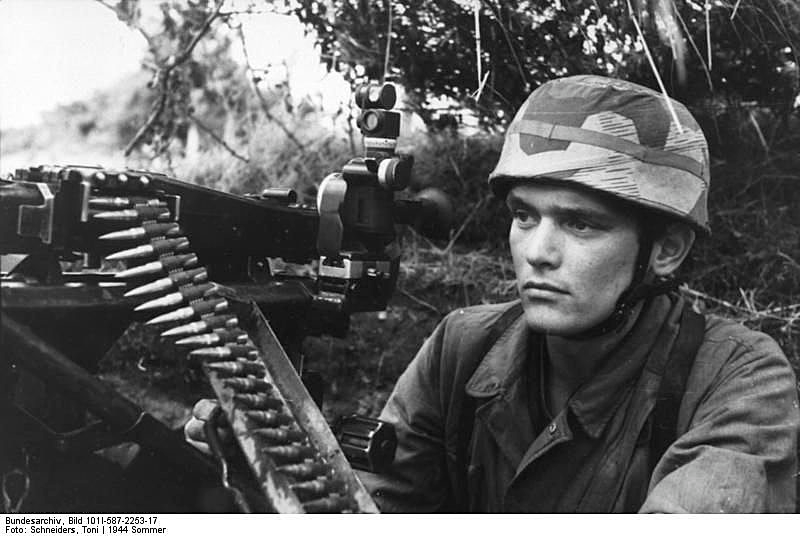
In this role, Americans encountered these guns well before the Bulge. But those tactics were still employed in the Ardennes that fateful December.
The MG42 was so influential that many other guns were designed in later years, using technology that it made famous.
Our own M60 can trace at least part of its heritage to the MG42. So, in that way, it’s still around.
Final Thoughts
The Battle of the Bulge ended in January 1945, but its effects were significant. It was the largest and bloodiest battle of WWII, with both sides sustaining heavy losses.
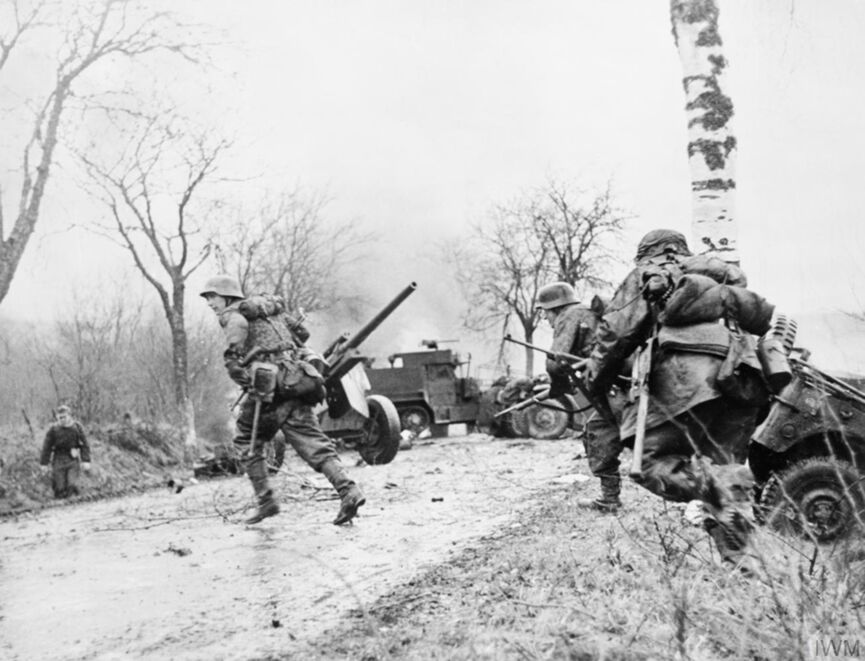
And the above guns were at the center of its battle, serving alongside soldiers.
What’s your favorite WWII-era firearm? Let us know in the comments below. Love history? We have a section dedicated to firearms and military history, so be sure to head over to our History category for more!

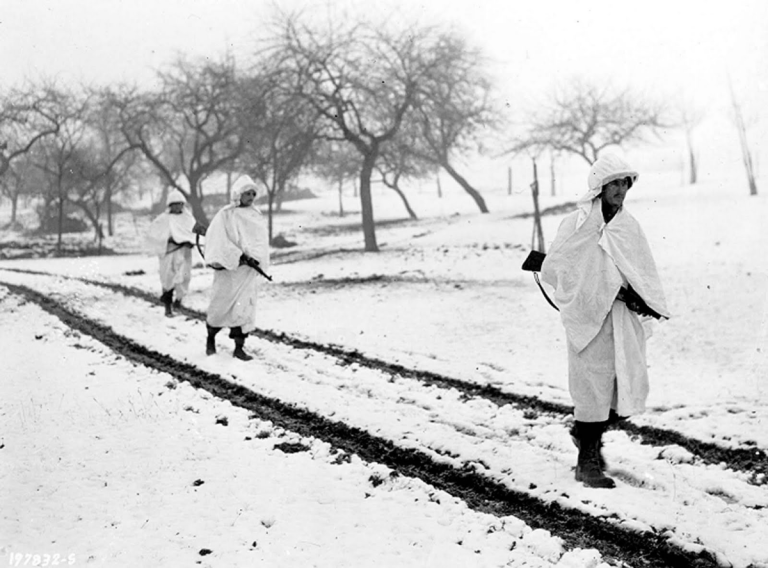



5 Leave a Reply
Keep in mind that many of the German troops had the latest weapons at their disposal, including the STG-44 "sturm rifle" and the Karabiner 43, Germany's answer to the Garand.
Great article Mike, and a good job of covering the main small arms of the Battle of the Bulge.
The history of SS Obersturmbannführer Otto Skorzeny is an interesting subject in his own right. He was responsible for planning and executing the raid to free Italian Dictator Benito Mussolini. A raid, still studied to today as a classic Guerilla Operation. Skorzeny survived the war, and eventually was recruited by the Mossad, and provided information about Arab threats to Israel up into the 70's. He died from Lung Cancer in 1975. Skorzeny faced charges after the War for Operation Grief and the use of enemy uniforms was a firing squad offense. He was acquitted because former British Officers told the court, the allies used the tactic as well.
Boy, I'd be happy to own any of the weapons used in the battle, that's for sure.
I just bought a M1918 A3 BAR because my uncle carried one with Patton's 3rd Army. It filled a gap between the 1903 Springfield, and the machine guns that came later. It has a few warts (heavy, only 20 rd. magazine, hard to change the barrel) but who can't love an automatic, or in my case, a Semiautomatic. 30-06? It taught me one thing: My Uncle Dick wad a certified badass. Imagine humping a 20 lb. rifle, the ammo for a .30-06, and all of your personal kit through mud, snow, and enemy fire, day in and day out, for months. Those guys were MEN!
The Springfield 1903. *cough*.
"I told my brother I'd bring him home a luger" -Band of Brothers